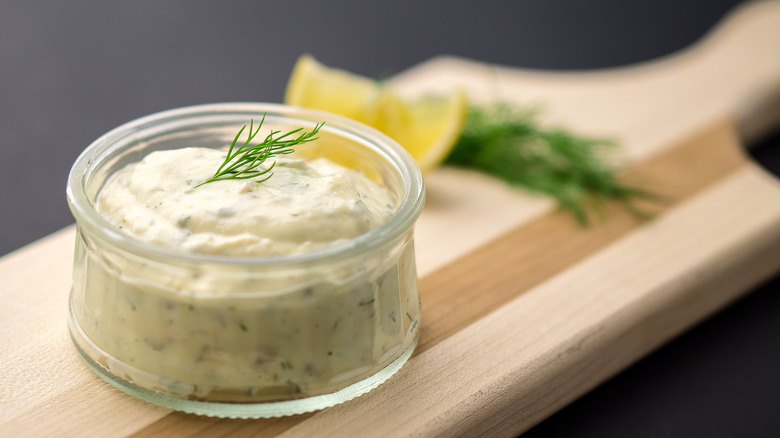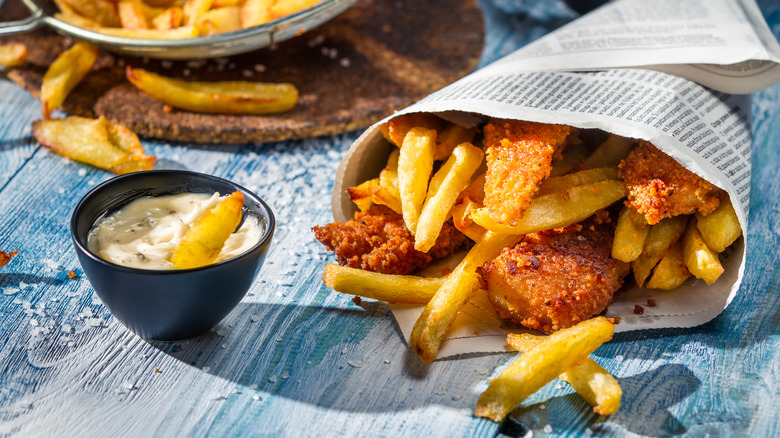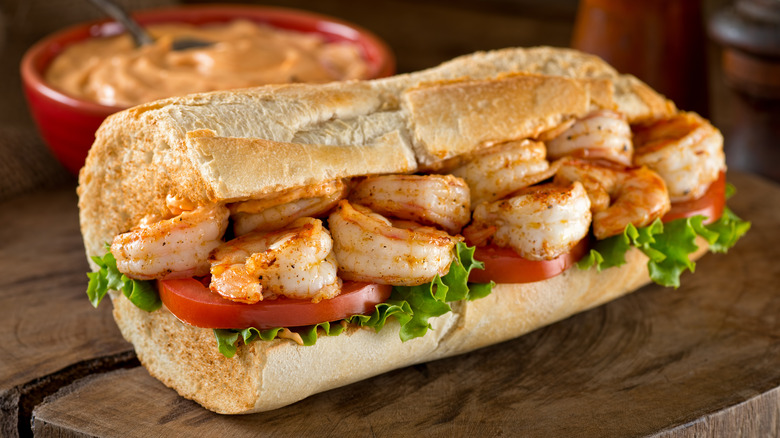What's Actually In Tartar Sauce?
At certain restaurants, paper cups of tartar sauce are a forgone conclusion. Whether it's a neighborhood fish fry or a trek to your standard seafood chain, Americans love to dip fish or other aquatic treats, preferably fried, into tartar sauce.
According to Zippia, Alaska prefers tartar sauce over any other condiment, including ketchup. Maybe the state's shoreline is proportional to the amount of tartar sauce required to dip all that accessible seafood. Montana, a land-locked state and the only other tartar sauce lover on the map, however, is harder to explain. Perhaps it's simply because tartar sauce is that delicious.
Tartar sauce has become so routine, so ubiquitous, we might not even know exactly what it is. The Straight Dope dives into this condiment's roots as "sauce tartare" in the motherland of sauces, France. The Tartars were a brutal tribe of Asia whose minced beef meal moved west. In France, that became steak tartare, after the Tartars, who were themselves named after a particularly barbaric part of Hades in Greek mythology called Tartarus. Tartar sauce is not directly related to steak tartare, but its name has similar roots — "tartare" could also be translated as "rough" in French as a reference to the Tartar tribe. Apparently, someone decided the sauce was rough and it also came to be named after the Tartar tribe. That rough sauce is used to dress just about anything (probably not steak tartare) but fish has always been a favorite application.
Traditional tartar sauce
There's certainly no shortage of bottled and jarred tartar sauces available. At a glance, all of them are a creamy white sauce studded with something pickled, and something to provide an acidic twang. If it looks pretty simple to replicate, that's because it is. If you go to the trouble of making your own fish and chips, you may as well toss together some homemade tartar sauce.
The variations are almost endless but the basics of tartar sauce, according to Healthline, are mayonnaise, pickles, capers, lemon juice, and herbs. Pickles can mean just about anything, from a sour cornichon to a syrupy sweet bread and butter pickle. That pickle doesn't even need to be a cucumber, feel free to use a pickled onion or a favorite relish. Sub a vinegar of your choice for the lemon juice. Up the tartness (pun intended) with some citrus zest. The herbs you choose will make a massive difference. Parsley is fine, but get creative with some dill, tarragon, cilantro, or basil. The choice is yours.
Upgrade your tartar sauce
Tartar sauce is the trunk of a whole family of sauces. If you add some hard-boiled eggs, it becomes sauce gribiche, which is traditionally served with poule au pot. Edible Boston points out that this high highfalutin-sounding sauce is a great way to dress up some humble roasted veggies, like broccoli, and is an ideal potato salad dressing.
In Cajun country, you're more likely to find remoulade than tartar sauce. Remoulade is a broad term that has many meanings, like this celeriac remoulade from The Guardian. The most common pink-hued version can be summed up as a Cajun seasoned and ketchup-enhanced tartar sauce mixed with creole mustard. In The Washington Post, esteemed New Orleans chef Paul Prudhomme provides his version of a remoulade that he serves with shrimp. It's also a common addition to po'boy sandwiches.
With all of this in hand, you're perfectly equipped to celebrate National Tartar Sauce Day on February 24. Buy a favorite jar, make the classic, or embrace a new variation. No matter what, you'll find that these all can dress up more than just fried seafood (though they are especially good at that).


